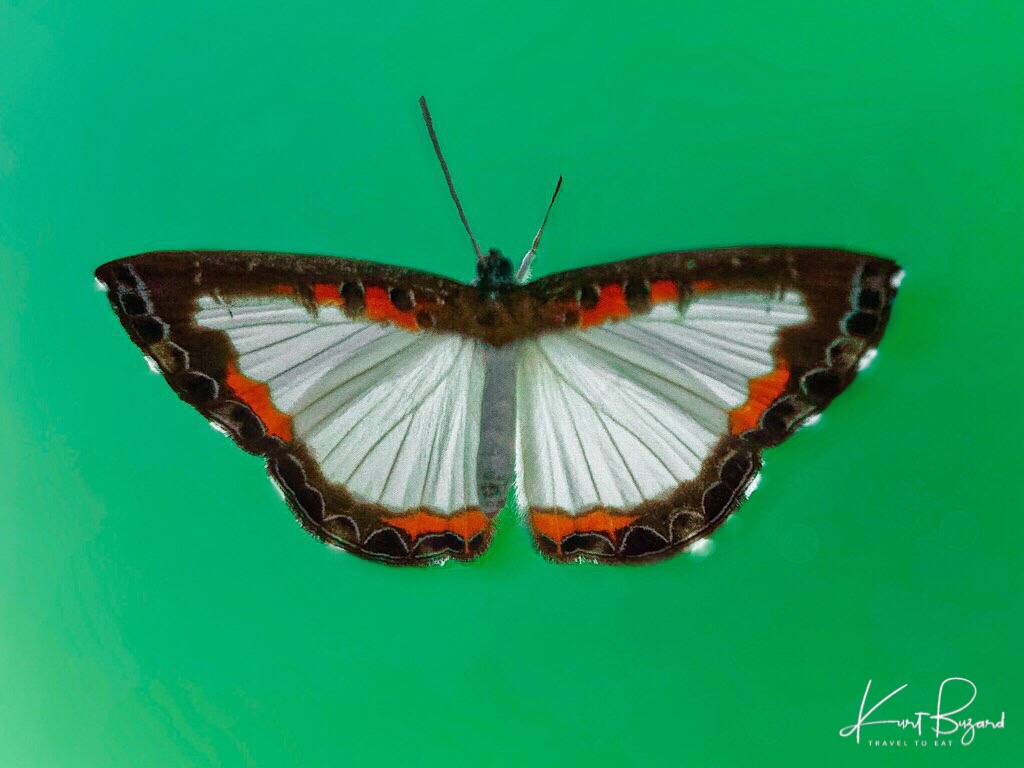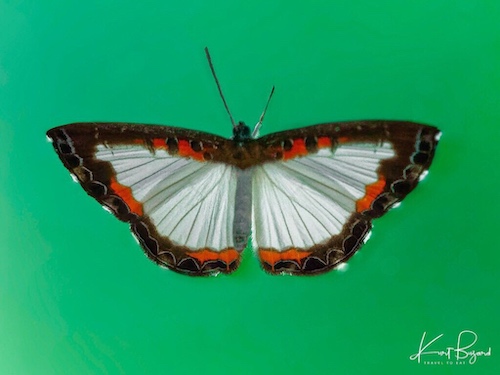
I have a few photographs that depict flowers found wild in Costa Rica (including the famous Hot Lips or Hookers Lips flower) some photos of butterflies and hummingbirds found on Porterweed and Lantana. One fine early morning on my most recent trip to Costa Rica, we visited a patch of wild Porterweed. This area was alive with small hummingbirds, maths and butterflies. In particular we saw the Rufous-Tailed Hummingbird (Amazilia tzacatl), the Violet-Headed Hummingbird (Klais guimeti) and a variety of moths and butterflies. In my estimation, there are no greater nectar producing species than Lantana and Porterweed. Every morning in Las Vegas, I have 5 to 10 hummingbirds waiting to feed at my various lantana beds. With the preferences of hummingbirds in Costa Rica, I plan to plant several patches of Porterweed to enhance my garden. As for the rest of the post, beautiful orchids and unusual plants will hopefully excite and amaze you. As for the butterfly at the top of the post, I found this butterfly at Frog’s Geaven. Nymphidium is a genus in the butterfly family Riodinidae present only in the Neotropical ecozone. Some Nymphidium are obviously secondarily transformed by mimicry, otherwise the almost exclusive colors are brown and white either of which being now and then preponderant.
Porterweed
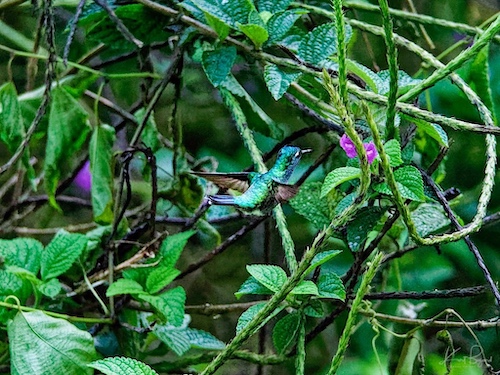
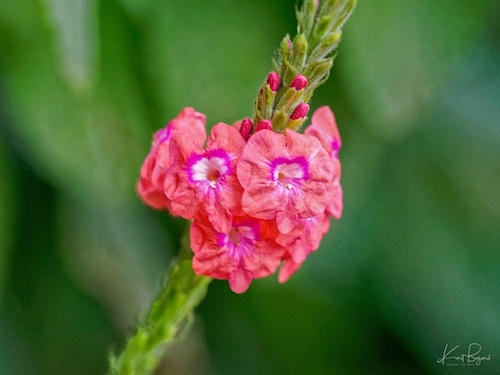
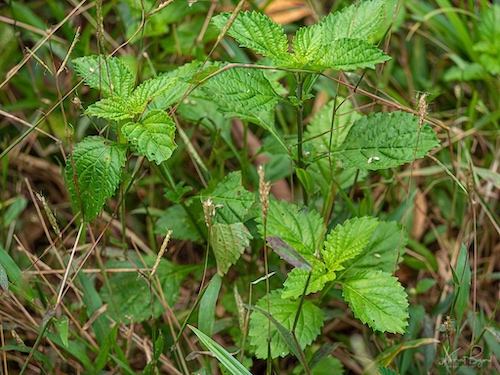
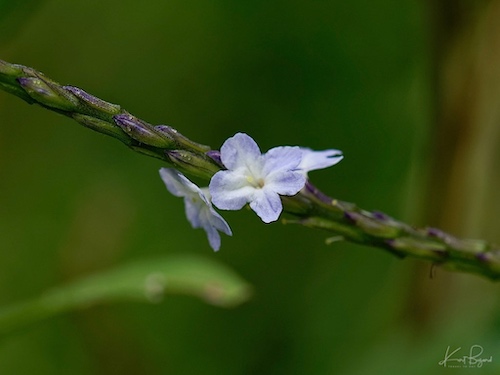
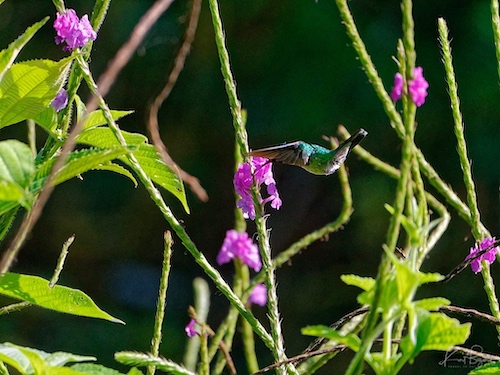
Stachytarpheta is a plant genus consisting of 65 species in the verbena family (Verbenaceae). The flowers are rich in nectar and popular with many butterflies, such as the South Asian crimson rose (Atrophaneura hector), Malabar banded swallowtail (Papilio liomedon), and grass yellow (Eurema hecabe) and hummingbirds. Several species in this genus are known as porterweeds. Because it is a weed and invasive, categorizing them is difficult and problematic. Stachytarpheta frantzii seems to be native to Costa Rica. Stachytarpheta jamaicensis is native throughout the Caribbean. Stachytarpheta mutabili is native to Mexico, the Caribbean, and South America. Stachytarpheta cayennensis Is native from Mexico south through Central and South America to Argentina, as well as many islands of the Caribbean. Stachytarpheta jamaicensis is always low and sprawling, while Stachytarpheta urticifolia forms an upright woody shrub with a distinct trunk. Stachytarpheta urticifolia is native to tropical Asia. In general, the coral or pink Porterweeds are larger than the blue-purples varieties.
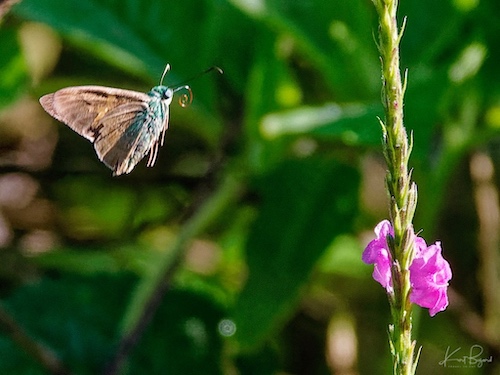
Astraptes fulgerator, the two-barred flasher, is a cryptic species complex in the spread-wing skipper butterfly genus Astraptes. It ranges all over the Americas, from the southern United States to northern Argentina.
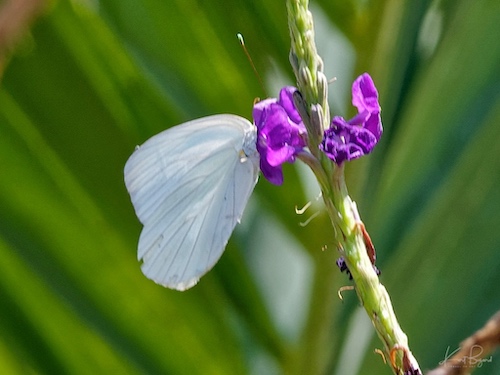
Kricogonia lyside, the lyside sulphur or guayacan sulphur, is a North American, Caribbean, and South American butterfly in the family Pieridae.
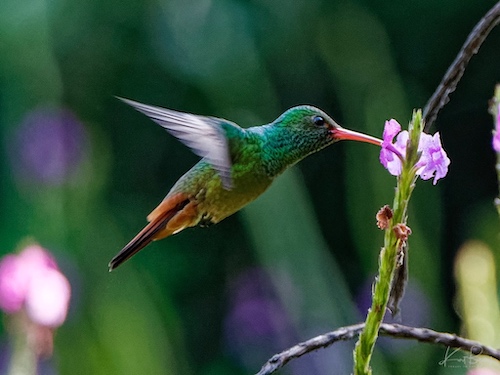
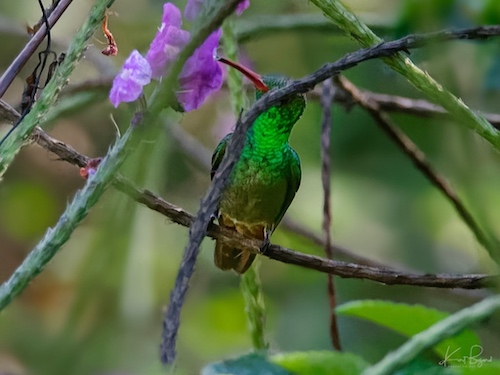
The rufous-tailed hummingbird (Amazilia tzacatl) is a medium-sized hummingbird that breeds from east-central Mexico, through Central America and Colombia, east to western Venezuela and south through western Ecuador to near the border with Peru. The larger Escudo hummingbird from Isla Escudo de Veraguas in Panama is commonly considered a subspecies of the rufous-tailed hummingbird.
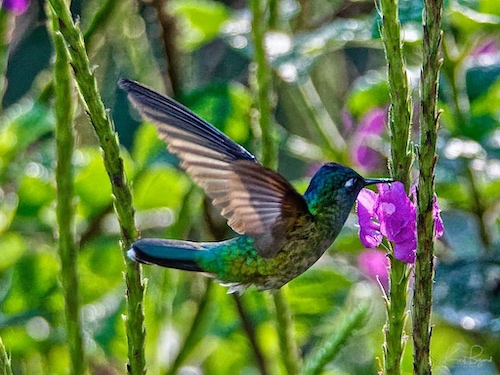
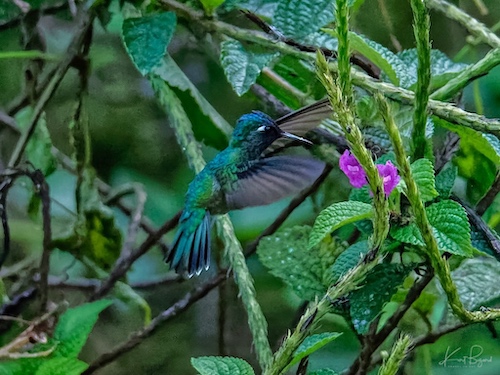
The Violet-headed Hummingbird (Klais guimeti) is a tiny hummingbird of a variety of humid forests from Honduras and Venezuela south to Bolivia and has a very patchy distribution. They are on average 3.2 inches (8.1 cm) in length with a short, straight bill that averages 0.51 inches (13 mm) in length. The head and throat of the male are intense violet or blue (depending on the angle viewed) with white spots behind each eye that stands out against the dark head. The back is metallic bluish-green (or bronze-green depending on the angle) and breast is green fading to a grey belly. The female is duller with a blue cap, green back and grey throat, breast and belly.
Julia Butterfly
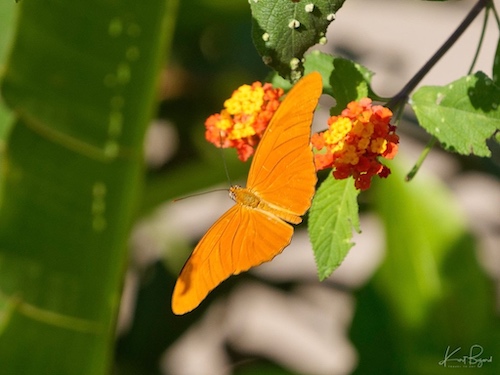
Dryas iulia, commonly called the Julia butterfly, Julia heliconian, the flame, or flambeau, is a species of brush-footed (or nymphalid) butterfly. The sole representative of its genus Dryas, it is native from Brazil to southern Texas and Florida, and in summer can sometimes be found as far north as eastern Nebraska. Over 15 subspecies have been described.
Gulf Fritillary Butterfly
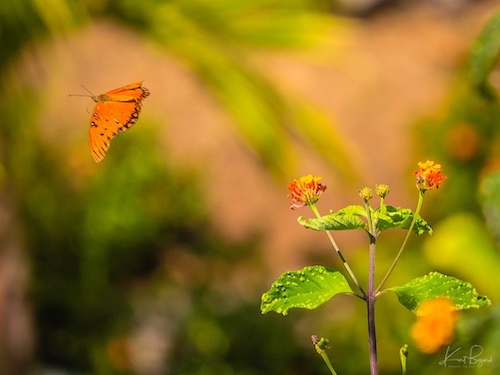
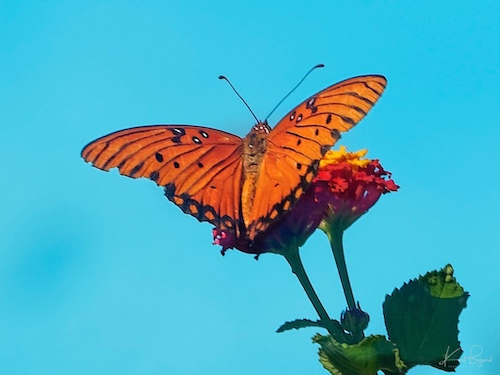
The Gulf fritillary or passion butterfly (Agraulis vanillae) is a bright orange butterfly in the subfamily Heliconiinae of the family Nymphalidae. That subfamily was formerly set apart as a separate family, the Heliconiidae. The Heliconiinae are “longwing butterflies”, which have long, narrow wings compared to other butterflies. Gulf fritillaries are found primarily in the southern parts of the U.S., such as many regions of Texas and Florida. However, this butterfly’s range can extend from the southern U.S. into parts of Mexico and Central America and sometimes as far as parts of South America.
Banded Peacock Butterfly
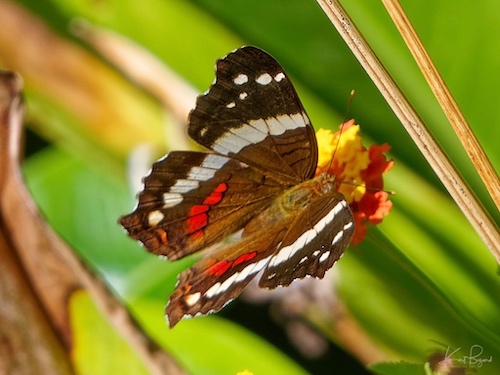
Anartia fatima, the banded peacock, is a butterfly in the family Nymphalidae. It is commonly found in south Texas, Mexico, and Central America but mostly studied in Costa Rica. This butterfly prefers subtropical climates and areas in which there is a lot of moisture, such as near rivers. It spends much of its time in second-growth areas, meaning woodland areas that have regrown after harvest.
Polydamas Swallowtail Butterfly
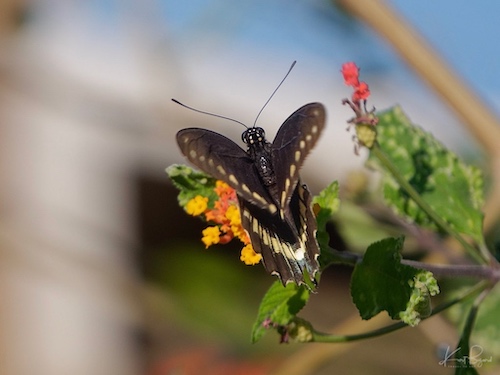
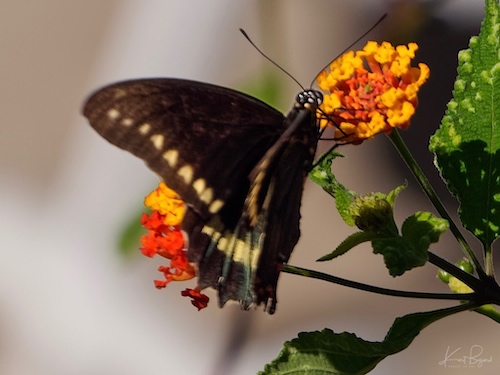
Battus polydamas, also known as the gold rim swallowtail, the Polydamas swallowtail or the tailless swallowtail, is a species of butterfly in the family Papilionidae. The range is South Texas and peninsular Florida south to Argentina.
Orchids
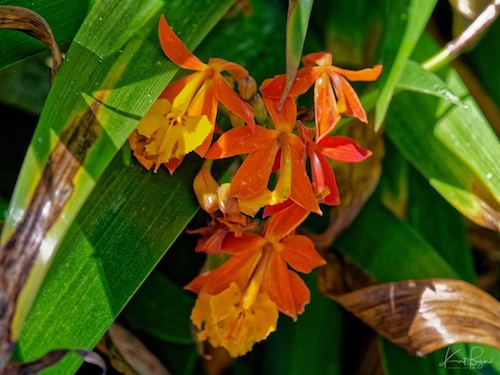
Epidendrum radicans is a species of orchid. Common names include ground-rooting epidendrum, fire-star orchid, rainbow orchid, and reed-stem epidendrum. It is a common roadside weed at middle elevations in Central America. The diagnostic characteristic of E. radicans is its tendency to sprout roots all along the length of the stem; other crucifix orchids only produce roots near the base. Epidendrum radicans is part of a complex of several orange-flowered, weedy species (including Asclepias spp.) that are unrelated but ecologically similar. Species within this group share pollinators as well as habitat, and are believed to exhibit what is known as convergent evolution, where unrelated species “converge” upon similar physical characteristics as a result of similar evolutionary pressures.
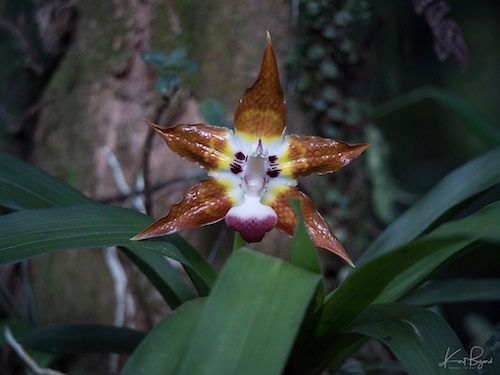
Huntleya is a small orchid genus native to South America, Central America and Trinidad. These are epiphytic, pseudobulbless and often larger plants with subplicate leaves nearing forty centimeters long, erect and single-flowered. They occur in wet cloud forests at medium altitudes. Similar to H meleagris but differs in the horizontally held labellum and the 12 raised laminae down the mid-portion of the lip. It has fan-shaped clusters of leaves and long rhizomes (Dodson and Bennett 1989). This orchid is usually found in Peru but I found it growing wild in Costa Rica.
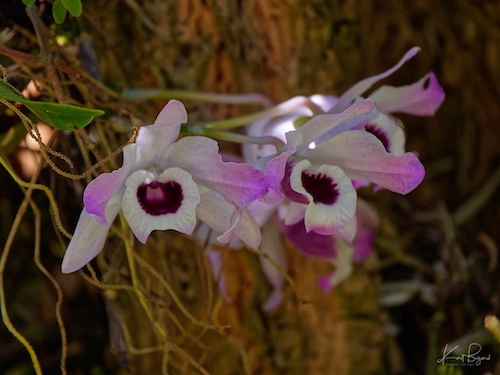
Dendrobium nobile is one of the most widespread ornamental members of the orchid family. Its blooms are variegated in colour, shading from white through pink and purple, and the many different cultivated varieties produce different sized and coloured blooms. Dendrobium nobile is an epiphytic or lithophytic plant native to southern China (including Tibet), the Himalayas, and Indochina. The species is also reportedly naturalized in Hawaii.
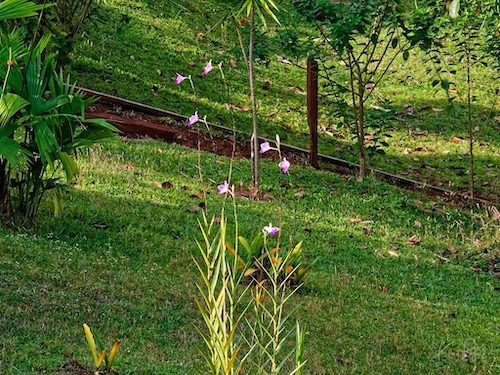
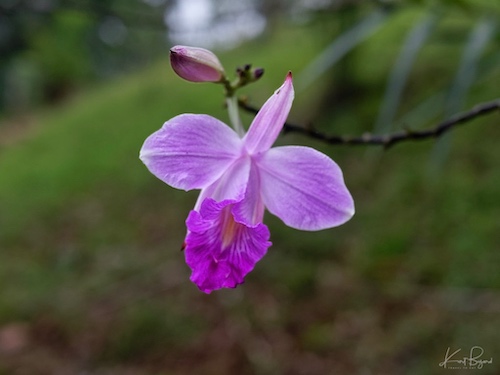
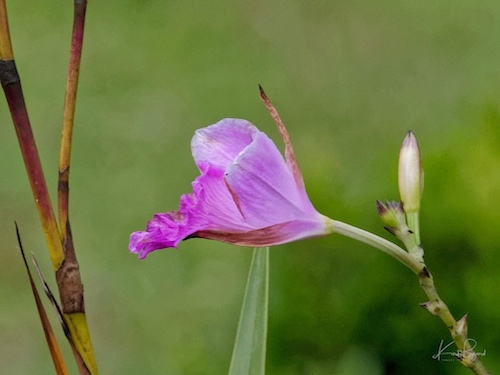
Arundina graminifolia is a species of orchid and the sole accepted species of the genus Arundina. This tropical Asiatic genus extends from India, Sri Lanka, Nepal, Thailand, Vietnam, the Ryukyu Islands, Malaysia, Singapore, China to Indonesia, the Philippines and New Guinea. It has become naturalized in Réunion, Fiji, French Polynesia, Micronesia, the West Indies, Costa Rica, Panama and Hawaii. It is also called bamboo orchid.
Cochliostema odoratissimum
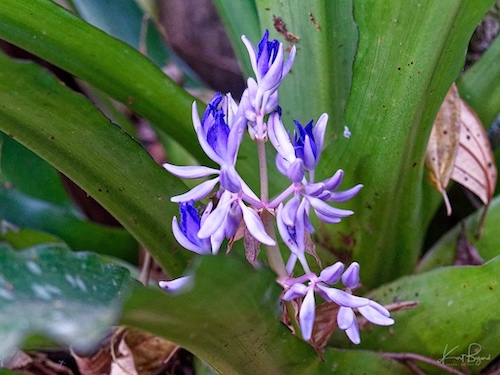
Cochliostema is a genus of plants with two species in the family Commelinaceae (the spiderwort and dayflower family). The genus occurs from southern Nicaragua to southern Ecuador. Cochliostema odoratissimum is a tank-epiphyte, resembling certain large bromeliads in this respect although it is not a bromeliad. This species also attains the greatest size for the genus, with its leaves reaching to 3 feet (1 m) in length, and plants sometimes reaching 6 feet (2 m) in height. Flowers are borne in a large thyrse and are generally the largest, among the most fragrant, and arguably the most complex in the spiderwort family.
Ixora
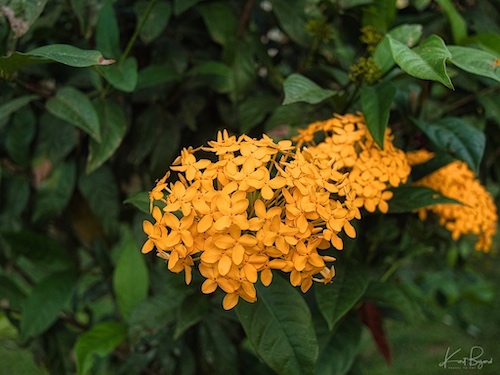
Ixora coccinea (also known as jungle geranium, flame of the woods or jungle flame) is a species of flowering plant in the family Rubiaceae. It is a common flowering shrub native to Southern India, Bangladesh, and Sri Lanka. It has become one of the most popular flowering shrubs in South Florida gardens and landscapes. It is the national flower of Suriname. Although there are around 500 species in the genus Ixora, only a handful are commonly cultivated, and the common name, Ixora, is usually used for Ixora coccinea. Ixora coccinea is used in warm climates for hedges and screens, foundation plantings, massed in flowering beds, or grown as a specimen shrub or small tree. There are numerous named cultivars differing in flower color (yellow, pink, orange) and plant size. Several popular cultivars are dwarfs, usually staying under 3 ft (0.91 m) in height.
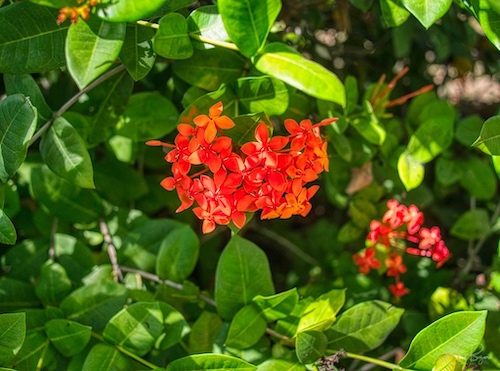
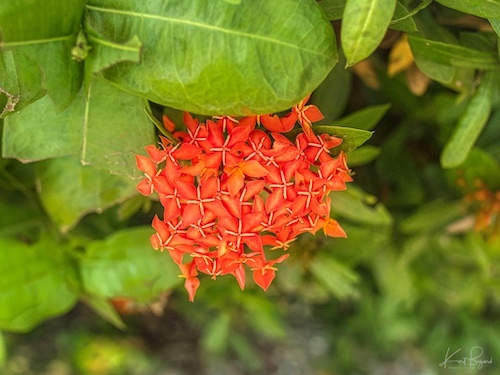
Ixora is a genus of flowering plants in the family Rubiaceae. It is the only genus in the tribe Ixoreae. It consists of tropical evergreen trees and shrubs and holds around 562 species. Though native to the tropical and subtropical areas throughout the world, its center of diversity is in Tropical Asia. Ixora also grows commonly in subtropical climates in the United States, such as Florida where it is commonly known as West Indian Jasmine. Other common names include viruchi, rangan, kheme, ponna, chann tanea, techi, pan, siantan, jarum-jarum/jejarum, jungle flame, jungle geranium, cruz de Malta among others. You may wonder how I differentiated Ixora macrothyrsa from Ixora coccinea, it was because it was clearly labeled as such at La Ensenada.
Water Hyacinth
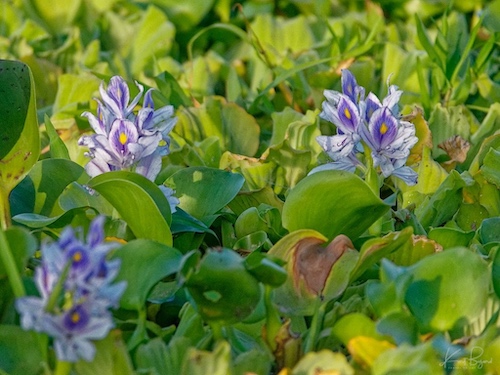
Eichhornia crassipes, commonly known as common water hyacinth, is an aquatic plant native to the Amazon basin, and is often a highly problematic invasive species outside its native range.
Yesterday, Today and Tomorrow
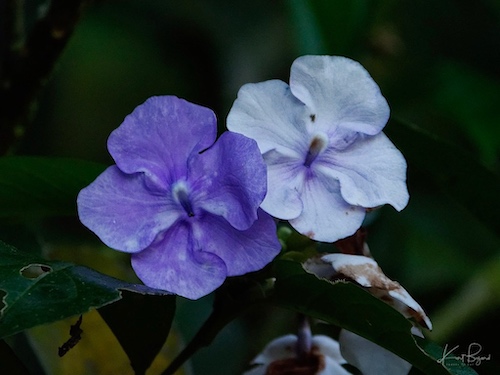
Brunfelsia pauciflora is a species of flowering plant in the family Solanaceae, the nightshades. It is endemic to Brazil, and it is grown in cultivation. A shrubby perennial plant grown in gardens, its common names include yesterday-today-and-tomorrow, morning-noon-and-night, Kiss Me Quick, and Brazil raintree.
Ipomoea
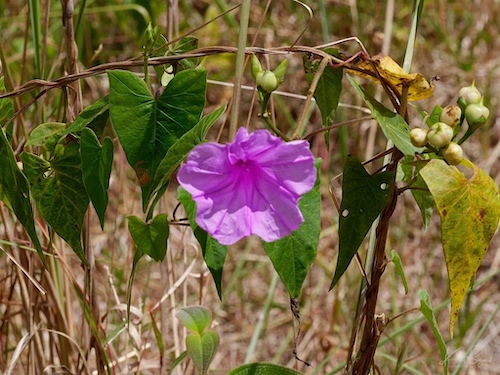
Ipomoea is the largest genus in the flowering plant family Convolvulaceae, with over 500 species. It is a large and diverse group with common names including morning glory, water convolvulus or kangkung, sweet potato, bindweed and moonflower. Most species have spectacular, colorful flowers and are often grown as ornamentals, and a number of cultivars have been developed. Their deep flowers attract butterflies, especially Sphingidae such as the pink-spotted hawk moth (Agrius cingulata), or even hummingbirds. Ipomoea setifera Is accepted and its native range is Mexico (Tabasco) to Tropical America. Found in flower in most months of the year but apparently most commonly in the autumn and winter from April to August.
Mimosa
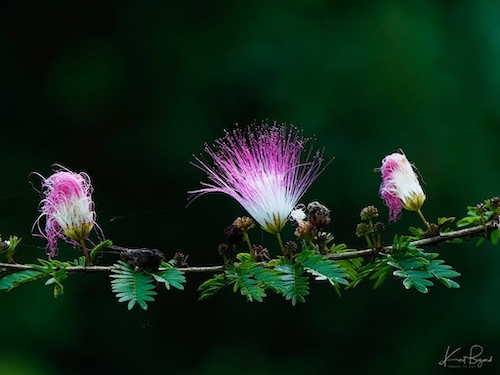
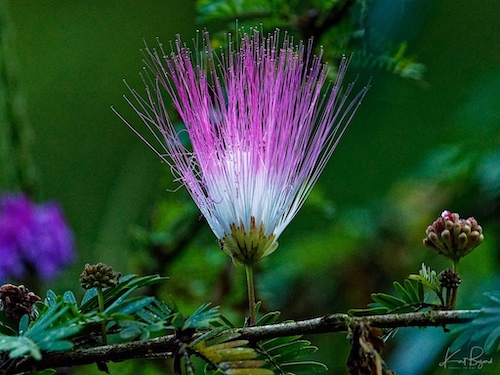
Albizia julibrissin, commonly called mimosa or silk tree, is a fast-growing, small to medium sized, deciduous tree that typically grows in a vase shape to 20–40’ tall with a spreading, often umbrella-like crown. It is native to Asia (Iran to Japan). It has been widely planted in the U. S. as an ornamental and has escaped cultivation and naturalized in many areas of the southeastern U. S. and California. In the wild, it is typically seen growing in vacant lots, waste areas, clearings, wood margins, fields and along roads. It can be quite invasive in watersheds where water currents carry and distribute the seeds downstream. It is noted for its bipinnate compound dark green leaves (to 20” long). Each leaf has 10–25 pinnae, with each pinnae having 40–60 tiny leaflets (to 1/4” long). Leaves have a fern-like appearance. Fluffy, pink, powder puff flowerheads cover the tree with a long summer bloom. Flowers are fragrant and attractive to bees. Flowers give way to flat bean-like seed pods (to 7” long) which persist into winter. Sensitive leaflets close up when touched and at night. Leaflets fall to the ground after frost, producing no fall color.
Glory Bush
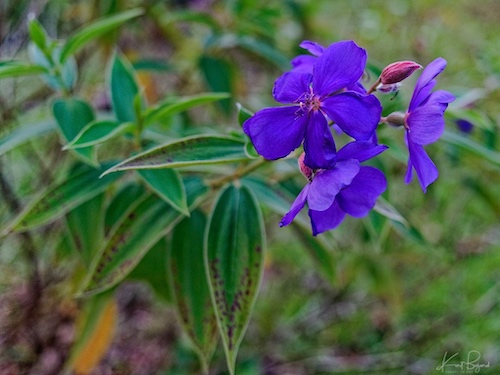
Tibouchina urvilleana is a species of flowering plant in the family Melastomataceae, native to Brazil. Growing to 10–20 feet (3–6 m) tall by 7–10 feet (2–3 m) wide, it is a sprawling evergreen shrub with longitudinally veined, dark green hairy leaves. Clusters of brilliant purple flowers up to 4 inches (10 cm) in diameter, with black stamens, are borne throughout summer and autumn.
Columnea purpurata
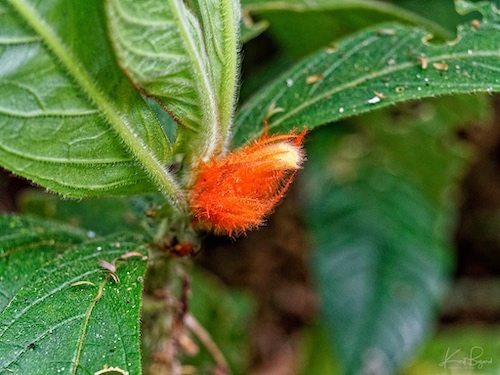
Columnea purpurata is a species of Gesneriaceae that is native to Costa Rica, Colombia, and Belize. The bright orange calyces and bracts of this species probably are attractive to hummingbirds. In some species, the flowers are even more insignificant than in this case, and attraction of pollinators is almost exclusively a function of the calyces.
Odontonema
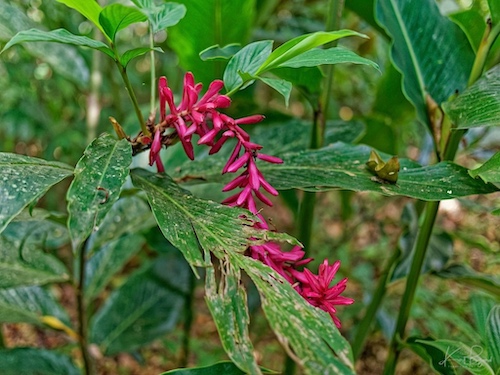
Odontonema, the toothedthreads, is a genus of flowering plants in the family Acanthaceae. It is native to Central America. Odontonema tubaeforme or the Firespike is a medium sized, tropical shrub that produces showy flowers throughout autumn and on into winter. Each inflorescence is bright red and made up of multiple tubular flowers that are situated at the end of each branch. The flowers are good at attracting birds and beneficial insects to the garden.
Coral Tree
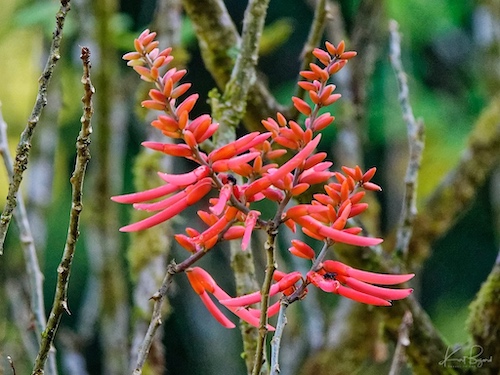
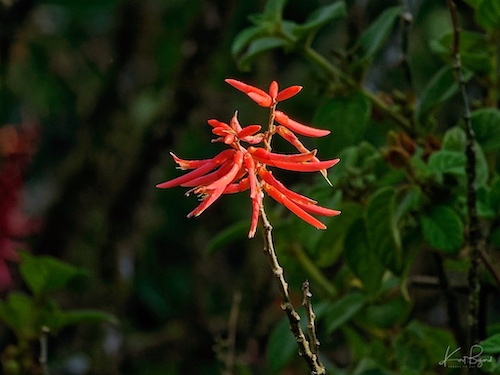
Erythrina America, (coral tree or colorines), is a flowering plant of the genus Erythrina which is native to Mexico. Colorín (plural colorines) is the name of a type of tree, Erythrina americana also called Tzompāmitl. The word colorín means color chillón—a “gaudy” or “loud” color (Williams 1959). Colorines plant also called, cuchillitos (little knives) or machetitos (little machetes, zompantle or coral is a nice flower, red in color and every individual flower resembles a little machete, the flower is edible and is boiled (only the red part of the flower) and cooked with scrambled eggs or tuna in many parts of south Mexico. This variety flowers during the dry season (April) in many parts, and the plant is very popular with hummingbirds because of the bright red color, the plant ranges from a few feet off the ground to trees 15 feet (5 m) tall.
Caladium bicolor
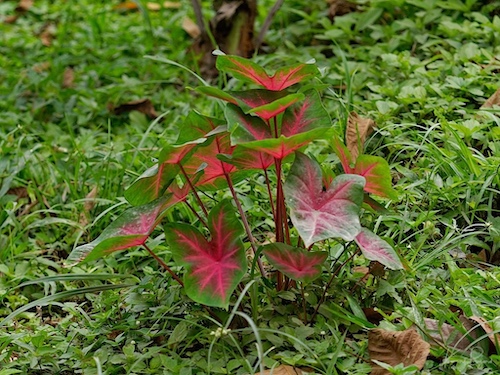
Caladium is a genus of flowering plants in the family Araceae. They are often known by the common name elephant ear (which they share with the closely related genera Alocasia, Colocasia, and Xanthosoma), heart of Jesus and angel wings. There are over 1000 named cultivars of Caladium bicolor from the original South American plant.
Hibiscus
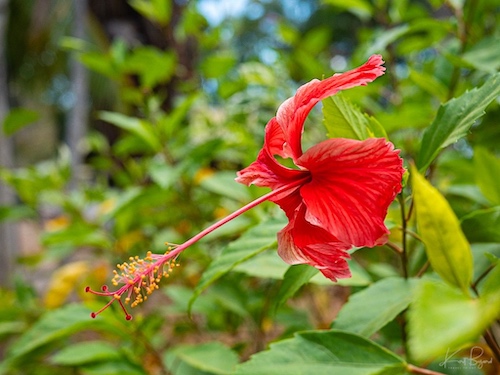
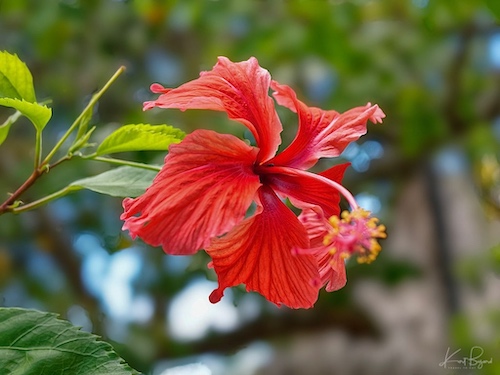
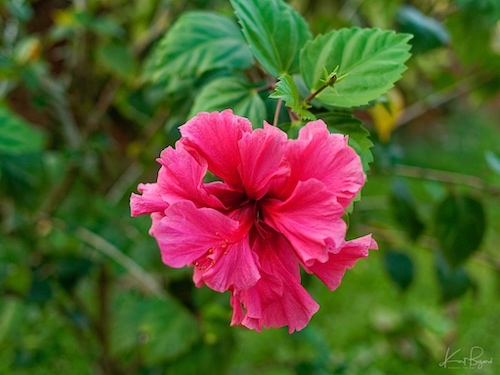
Hibiscus rosa-sinensis, known colloquially as Chinese hibiscus, China rose, Hawaiian hibiscus, rose mallow and shoeblackplant, is a species of tropical hibiscus, a flowering plant in the Hibisceae tribe of the family Malvaceae. It is widely cultivated in tropical and subtropical regions, but is not known in the wild, so that its native distribution is uncertain. An origin in some part of tropical Asia is likely. Despite its size and red hues, which are attractive to nectarivore birds, it is not visited regularly by hummingbirds when grown in the Neotropics. Generalist species, like the sapphire-spangled emerald, Amazilia lactea, or long-billed species, like the stripe-breasted starthroat, Heliomaster squamosus, are occasionally seen to visit it, however. In the subtropical and temperate Americas, hummingbirds are regularly attracted to it.
Malvaviscus
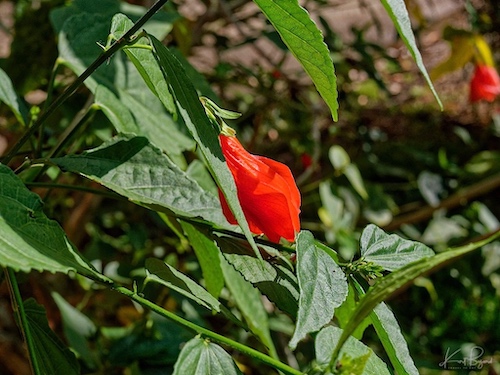
Malvaviscus is a genus of flowering plants in the mallow family, Malvaceae. Common names for species in this genus include Turk’s cap mallow, wax mallow, sleeping hibiscus, and mazapan. It belongs to a group of genera that differ from the closely related Hibiscus in possessing a fruit divided into 5 separate parts (a schizocarp), and having a style surmounted by 10, rather than 5, capitate or capitellate stigmas. Among those genera Malvaviscus is distinguished by having auriculate petals and red, fleshy fruits. The generic name is derived from the Latin words malva, meaning “mallow,” and viscus, which means “sticky,” referring to the mucilaginous sap produced by members of the genus. The fruit can be used to make jelly or syrup. Both the fruit and flowers are used to make herbal teas.
Hot Lips Flower
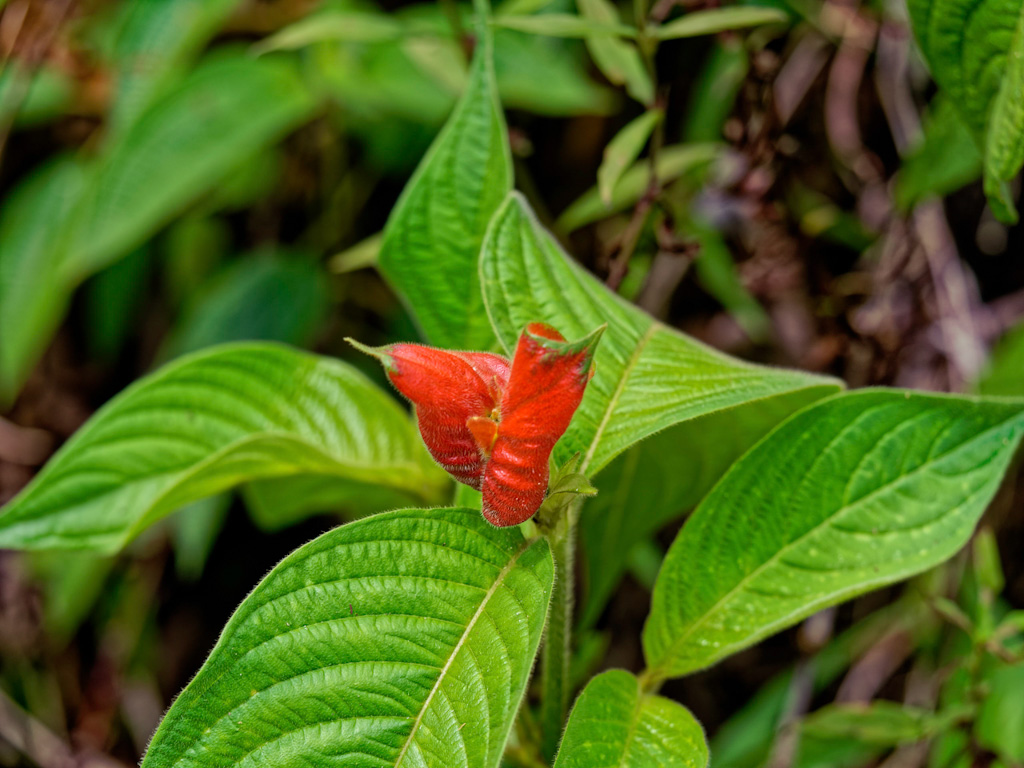
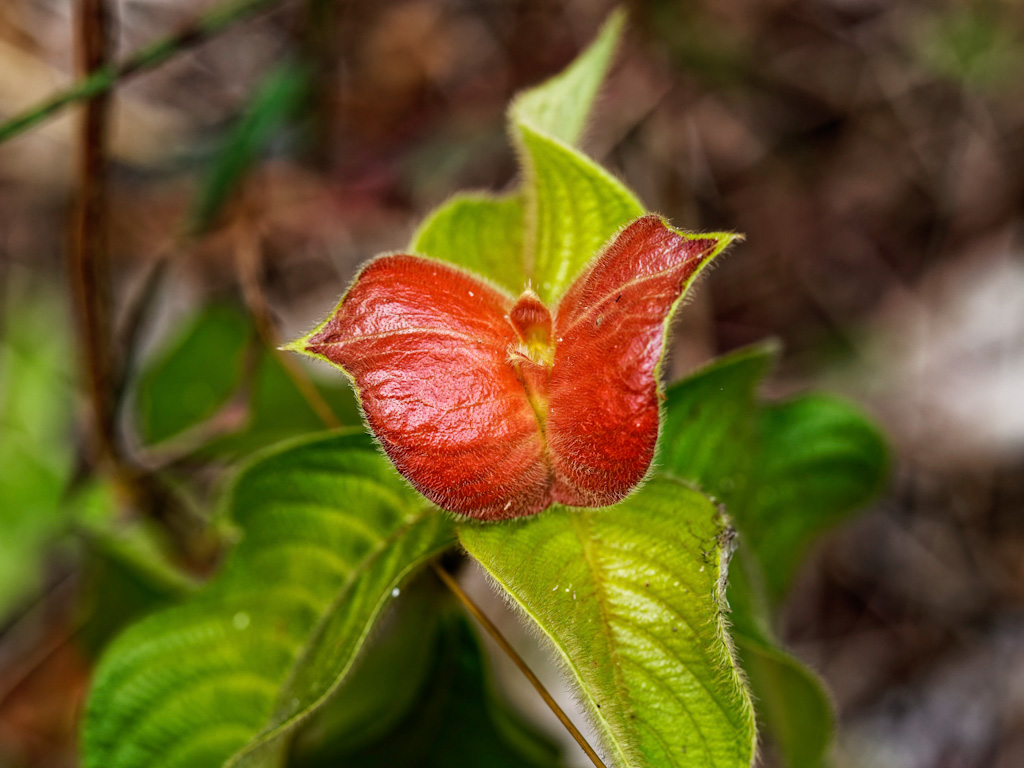
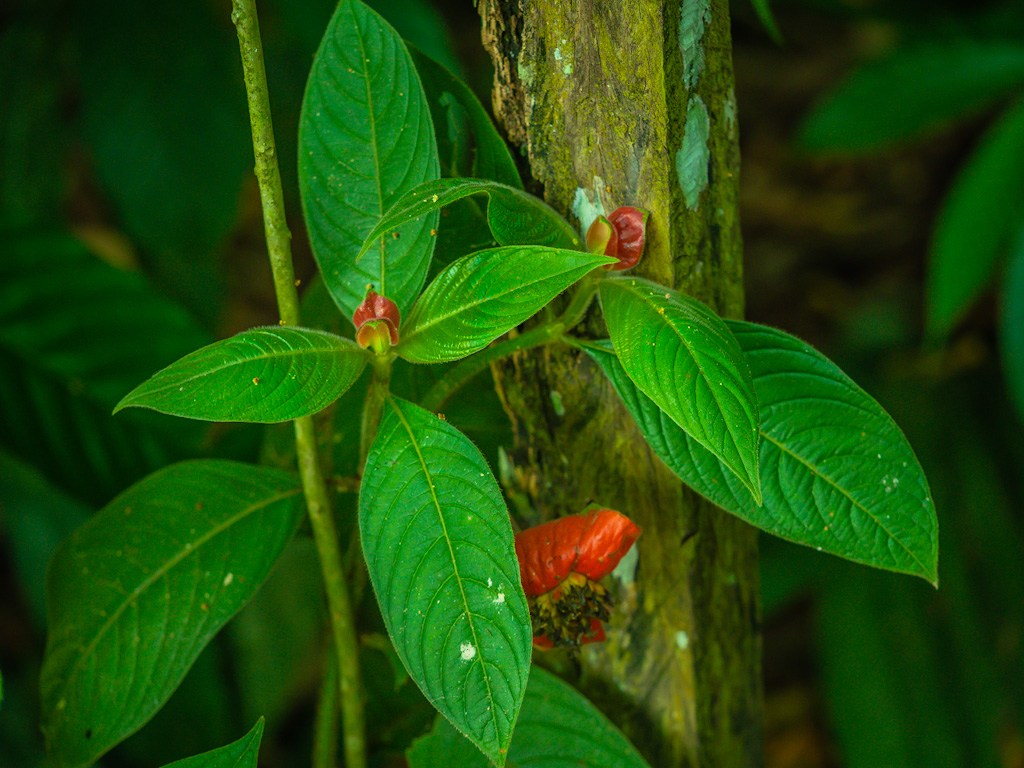
Palicourea elata (formerly Psychotria elata), commonly known as hot lips, hooker’s lips, or labios de puta, is a tropical plant native to rain forests in Central and South American countries such as Costa Rica, Ecuador, Panama, and Colombia. It can adapt to temperate climates. It is notable for its distinctive lip-shaped red bracts. The most distinctive features of P. elata are its red bracts, a modified set of leaves. Before its flowers bloom, the bracts resemble a pair of human lips. Its shape attracts hummingbirds and butterflies, which are its primary pollinators.
As always I hope you enjoyed the post.
References:

